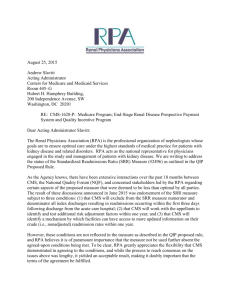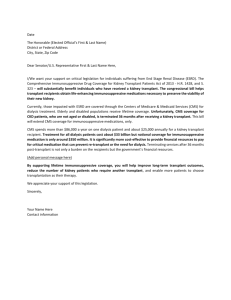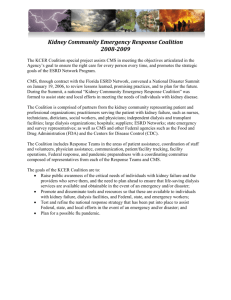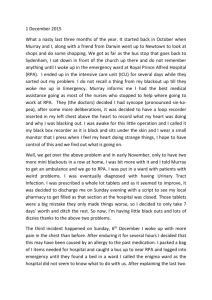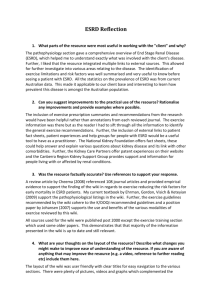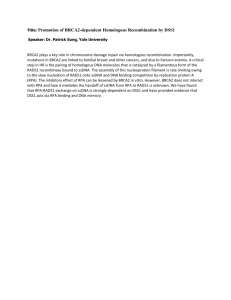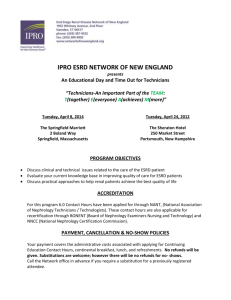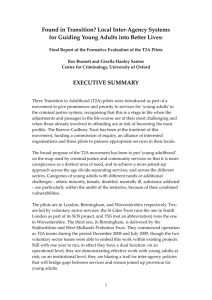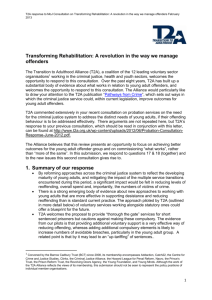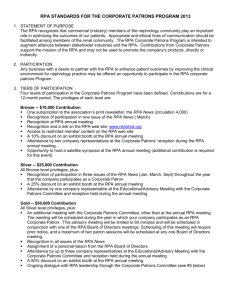April 1, 2015 John Thomas, Director, Clinical Standards Group
advertisement
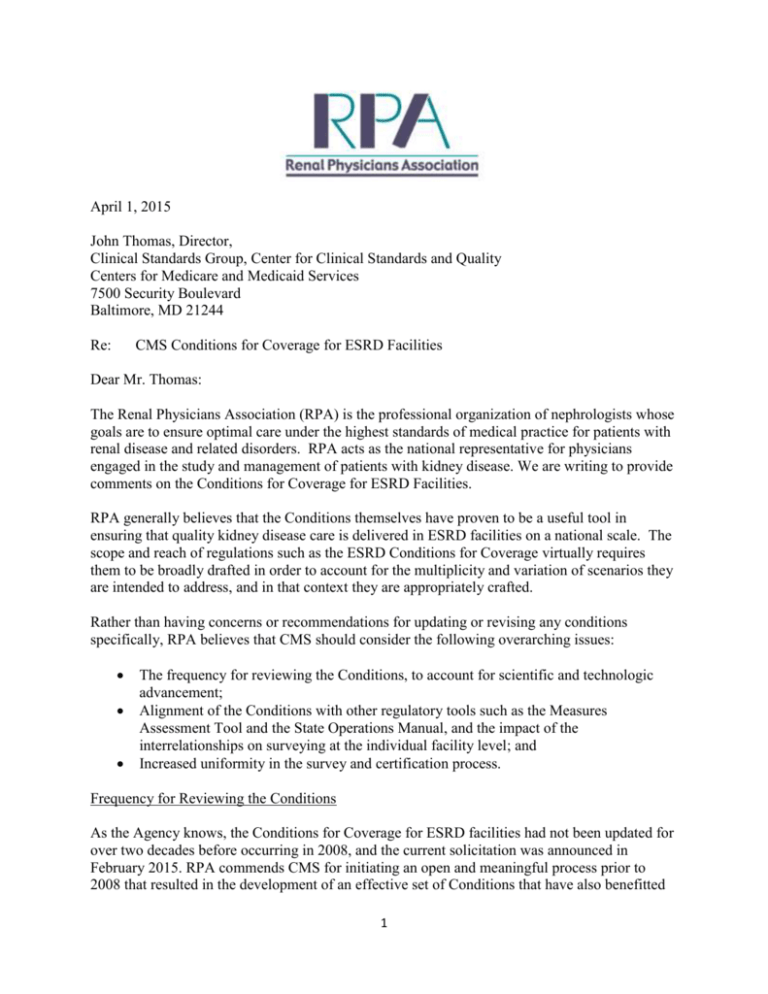
April 1, 2015 John Thomas, Director, Clinical Standards Group, Center for Clinical Standards and Quality Centers for Medicare and Medicaid Services 7500 Security Boulevard Baltimore, MD 21244 Re: CMS Conditions for Coverage for ESRD Facilities Dear Mr. Thomas: The Renal Physicians Association (RPA) is the professional organization of nephrologists whose goals are to ensure optimal care under the highest standards of medical practice for patients with renal disease and related disorders. RPA acts as the national representative for physicians engaged in the study and management of patients with kidney disease. We are writing to provide comments on the Conditions for Coverage for ESRD Facilities. RPA generally believes that the Conditions themselves have proven to be a useful tool in ensuring that quality kidney disease care is delivered in ESRD facilities on a national scale. The scope and reach of regulations such as the ESRD Conditions for Coverage virtually requires them to be broadly drafted in order to account for the multiplicity and variation of scenarios they are intended to address, and in that context they are appropriately crafted. Rather than having concerns or recommendations for updating or revising any conditions specifically, RPA believes that CMS should consider the following overarching issues: The frequency for reviewing the Conditions, to account for scientific and technologic advancement; Alignment of the Conditions with other regulatory tools such as the Measures Assessment Tool and the State Operations Manual, and the impact of the interrelationships on surveying at the individual facility level; and Increased uniformity in the survey and certification process. Frequency for Reviewing the Conditions As the Agency knows, the Conditions for Coverage for ESRD facilities had not been updated for over two decades before occurring in 2008, and the current solicitation was announced in February 2015. RPA commends CMS for initiating an open and meaningful process prior to 2008 that resulted in the development of an effective set of Conditions that have also benefitted 1 from kidney community buy-in. However, we would also offer that given the rapid pace of scientific progress, even the seven years (from 2008 to 2015) is too long of an interval to wait before initiating update of the conditions. Similar to other rule-making cycles this would allow the kidney community and CMS to better prepare for and accommodate changes that may need to be reflected within the Conditions. Recommendation: RPA recommends that CMS develop and promulgate a process that utilizes a four- or five-year time horizon that would avoid unnecessary regulatory development while providing an opportunity to address overly prescriptive rules that may not be reflective of the latest science or technological innovation. Alignment of Conditions with Other Regulatory Structures While as previously noted RPA believes the current Conditions to be working effectively, there are other regulatory and oversight vehicles such as the Measures Assessment Tool (MAT) and the State Operations Manual (SOM) whose content overlaps with the Conditions and which may include instructions and requirements that do not align with the Conditions or other Medicare programs. This misalignment results in varying interpretations at the point-of-contact between surveyors and the facilities being reviewed. For example, the MAT continues to require monitoring of anemia management using a measure (the Hgb < 10 g/dL measure) that has been discontinued in the ESRD Prospective Payment System (PPS) Quality Incentive Program (QIP). The SOM does not reflect updates in the ESRD Application and Survey and Certification Report (CMS Form 3427), which has been modified three times. Recommendation: RPA recommends that when an update to any of these regulatory guidance vehicles is under consideration, CMS should prospectively review all related guidance to ensure that the instruction is complementary rather than contradictory and that clarity is provided to surveyors and other personnel responsible for interpreting the guidance. Increased Uniformity in the Survey and Certification Process. RPA recognizes that that the Clinical Standards Group seeks input on the ESRD Conditions for Coverage and not on the dialysis facility survey process per se, however, given that the Conditions form the foundation for performing the surveys, we would be remiss to not note that the current system for surveying dialysis facilities often results in the quality of the surveys being compromised. While the dialysis facility certification process in some states is a positive and educational exercise that fosters the development of effective processes of patient care at the institution, in other states facility surveys can be arbitrary and punitive, and contrary to the needs of the local kidney patient population. Lack of uniformity in the training and education of the surveyors causes significant variability in the caliber of inspections from state to state. Some dialysis facility medical directors have noted that surveyors unfamiliar with renal care processes 2 will often focus on issues peripheral or even unrelated to the delivery of safe dialysis while ignoring the more critical elements of ESRD services, or will cite the facility for “violations” that do not reflect deviation from the Conditions or from state regulations governing ESRD facilities. Recommendation: RPA strongly recommends that CMS enhance the uniformity and quality of the survey process in an effort to improve patient care. As always, RPA welcomes the opportunity to work collaboratively with CMS in its efforts to improve the quality of care provided to the nation’s kidney patients, and we stand ready as a resource to CMS in its future endeavors. Any questions or comments regarding this correspondence should be directed to RPA’s Director of Public Policy, Rob Blaser, at 301-4683515, or by email at rblaser@renalmd.org. Sincerely, Rebecca Schmidt, DO President 3
